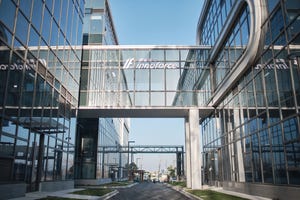
Glucagon-like peptide-1 (GLP-1) drugs for diabetes and weight loss represent the new wave of blockbuster drugs. Much like messenger RNA (mRNA), which earned its validation through the COVID-19 pandemic and drove a surge of investment and capacity expansions, the firms that have been in the GLP-1 space from the beginning are now reaping the rewards.
Michael Palladinetti, global head of business development and licensing at Sanofi, told delegates attending Bio Europe Spring in Barcelona, Spain last week that “history has shown us time and time again that no one has the monopoly on the next wave of innovation.”
Citing the recent GLP-1 wave, Palladinetti said the “industry has a bit of fear of missing out (FOMO)” and paid “kudos to Lily and Novo for staying in the space.” He added how innovation is “also very difficult” and that industry players need to have a “broad view.”
Both firms are pioneers in the diabetes space, having launched their own versions of insulin over 100 years ago. Both have also had oral GLP-1 drugs on the market for nearly 20 years and are now banking on injectable GLP-1s for diabetes and weight loss to propel future sales.
Ozempic and Wegovy (both semuglatide) are owned by Novo Nordisk and, for the full-year 2023, the former brought in $13.8 billion with the latter adding $4.5 billion to the firm’s topline.
Eli Lilly’s diabetes drug Mounjaro (tirzepatide), meanwhile, pulled in over $5 billion for the company last year, and its recently approved obesity drug Zepbound (also tirzepatide) is expected to increase revenues in the future.
As such, there has been a wave of investment in the GLP-1 space. Over the past six months, Big Pharma peers Roche and AstraZeneca have turned their focus to GLP-1s – the former acquired Carmot Therapeutics for $2.7 billion, while the latter licensed a candidate from Eccogene. Meanwhile, numerous service firms have expanded their networks and capabilities to accommodate the growing demand for GLP-1-related services.
$102bn market by 2030
In November 2023, investment banking company TD Cowen provided insight into the GLP-1 market. The analysts said “GLP-1 sales could reach $102 billion by 2030, of which obesity is projected to contribute $41 billion.”
“Two leaders in this field are expected to take roughly 44% and 52% share, respectively, of the global GLP-1 market in 2030.”
With high financial gain predicted, supply issues have been raised concerning how companies will meet the growing demand. The analysts remained optimistic that this class of drugs will have the ability to “overcome supply issues and enjoy sustained uptake.”
Additionally, they said “we are also optimistic that reimbursement will steadily expand for weight loss, achieving over $100 billion in global sales by 2030.”
About the Author
You May Also Like









